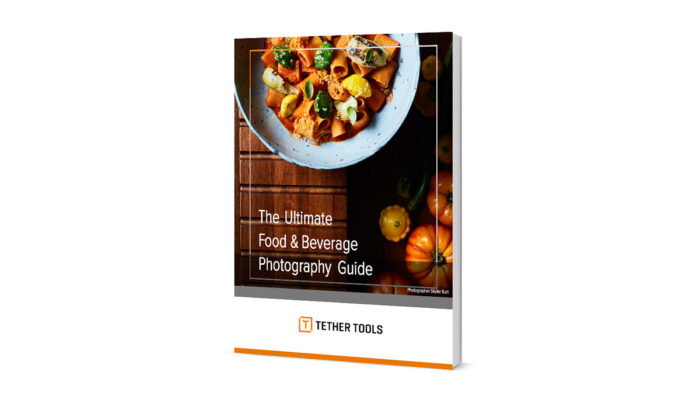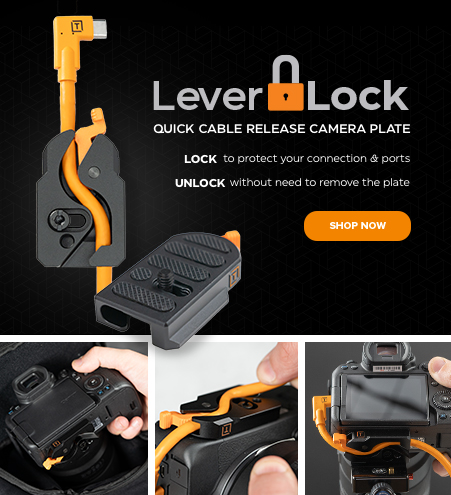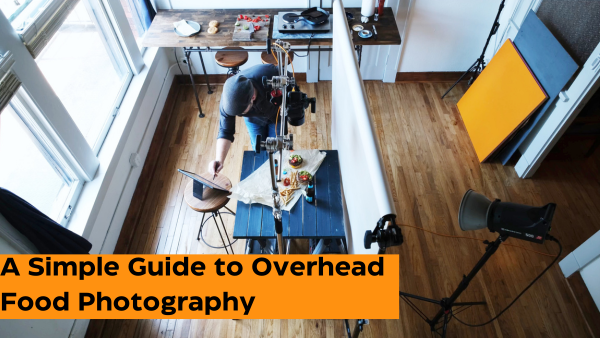
Overhead food photography, or knolling photography, has become increasingly popular with food bloggers, using phrases like “flat lay”, “bird’s-eye view”, and “knolling” to describe this style of food photography.
One of our pro photographers, Joanie Simon, makes excellent use of the overhead food photography technique. Her eye for detail and natural flair is on-point. Joanie offers gear and set-up guides to turn confusing photography concepts into easy-to-understand lessons that click. For inspiration and pro tips, head over to her website, The Bite Shot, and check out her inspirational Instagram feed here.
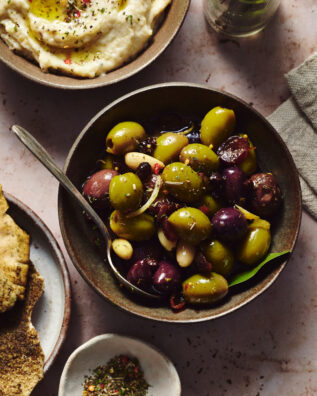
These types of overhead food shots don’t come from an unprepared, handheld camera approach. Using the correct equipment and being slightly obsessive about composition and parallel levels are key to producing such enticing, mouth-watering images.
Don’t Attempt to Balance on a Stool, Just Tether
You wouldn’t want to knock over your expensive camera or have it come crashing down on top of your food creation because you were awkwardly leaning over your camera while standing on a wobbly old stool, so keep things tidy and tethered.
For tethered photography, you’ll attach your camera to an extension arm on a tripod or an overhead bar between two C-stands. With these setups, it’s best for you to tether your camera to an external monitor. This allows you to carefully check everything from the camera angle to the tabletop composition, and you can see all the small details, without having to precariously lean over your camera and your carefully prepared food layout. Pin sharp focus is essential in this style of photography, so we suggest remotely triggering your camera for the best results.
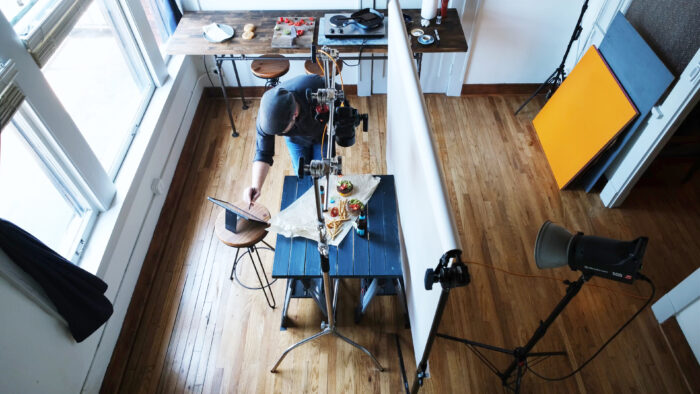
Functional Work Station for Overhead Food Photography
The Tether Tools All In-One Portable Studio Tethering Kit is an ideal solution for food photographers who want to enhance their workflow and improve the quality of their work. This kit includes everything a photographer needs to create a fully functional studio “on-the-go”. The Tether Table Aero provides a stable and secure platform for your laptop or tablet, making it easy to review your images and adjust your camera settings. The Rock Solid Tripod Roller allows you to move your setup around quickly and easily, ensuring that you get the perfect shot every time.
The ONsite USB-C battery and wall charger ensure that you never run out of power, even when shooting in remote locations. The ONsite Relay C Camera Power System and Camera Coupler enable you to power your camera directly from a portable battery, eliminating the need for extra cords and reducing clutter. The Rock Solid 2-Head Cross Bar Side Arm and Rock Solid 4-Head Tripod Cross Bar give you the flexibility to position your camera and lens exactly where you need them. The Aero Hooks and Dual Wing Sandbag provide additional stability and support, ensuring that your setup stays in place during even the most challenging shoots.
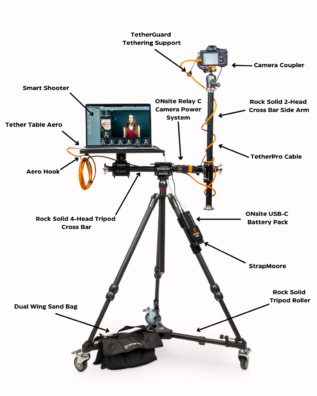
Overall, the All In-One Portable Studio Tethering Kit is an essential tool for food photographers who want to improve their workflow and create stunning images. With its versatile components, portable design, and reliable performance, this kit is the perfect solution for photographers who need to work on location or want to create a professional studio setup in their own studio. The kit’s durable and high-quality components ensure that it will withstand the demands of even the busiest photographers, making it a valuable investment for any professional or aspiring photographer.
A few Tips for Great Overhead Food Shots
- This style of food photography doesn’t require a shallow depth of field; you may therefore make extensive use of your zoom lenses, such as the classic Canon 24-70 F2.8 or 24-105 F4. Using a quality zoom lens enables you to enjoy sharp and textured images while fixing your camera’s position, adjusting the lens as needed for your composition.
- Try to avoid a very wide-angle shot, as it distracts from the focus of the image and distorts the outer edges of your photograph.
- Make use of natural light as much as possible, using diffusers to soften the light and reflectors to bounce light back into shadow areas.
- Overhead food shots need different media layout formats from various angles, so keeping your camera parallel with the tabletop greatly aids the usability of your images.
Overhead food shots are all about lighting and composition and give that “I’m about to devour the food” perspective. Move your camera into position with the tools and software available at Tether Tools that ensure you get the shot right.
Learn more from Joanie and other food photography experts in Tether Tools free guide: The Ultimate Food & Beverage Photography Guide.


